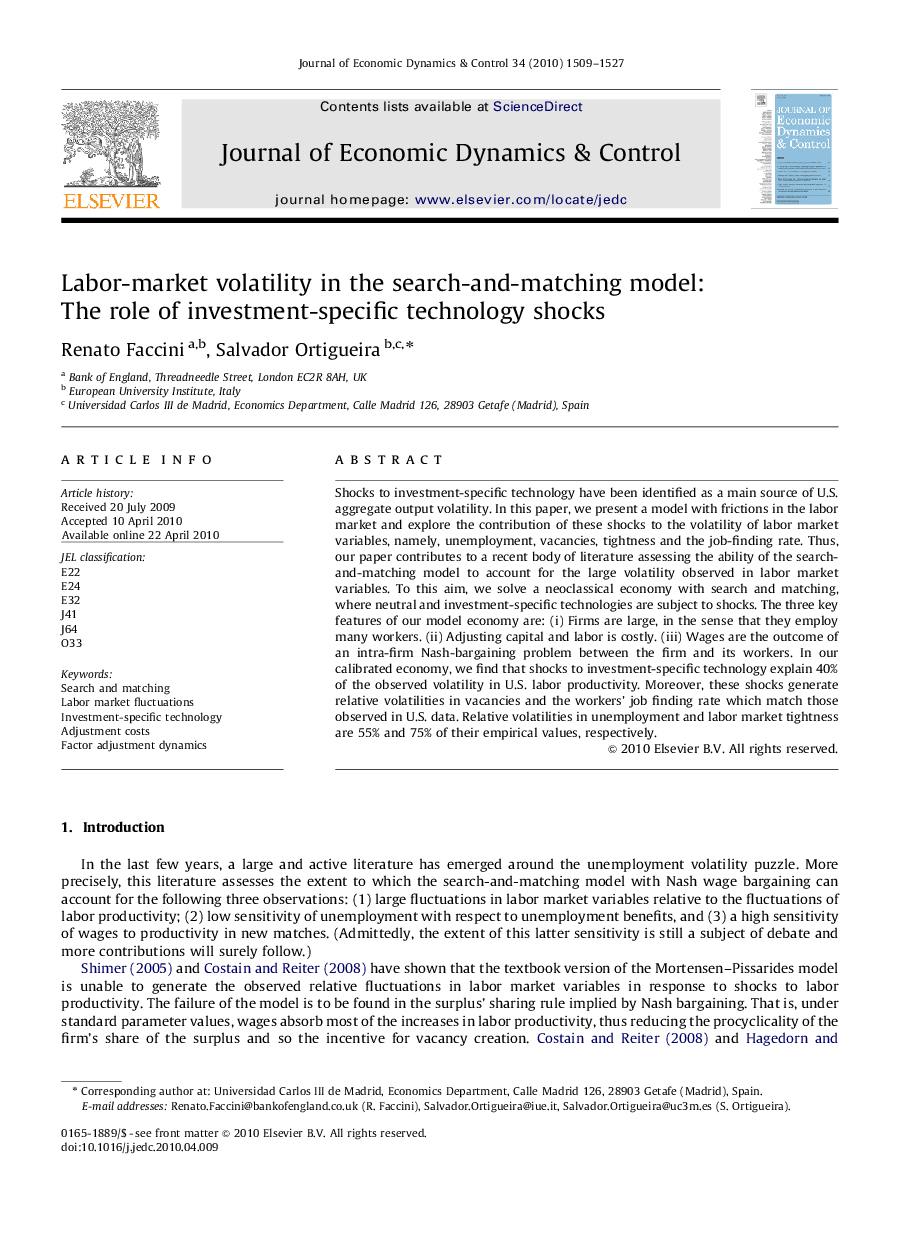| Article ID | Journal | Published Year | Pages | File Type |
|---|---|---|---|---|
| 5099391 | Journal of Economic Dynamics and Control | 2010 | 19 Pages |
Abstract
Shocks to investment-specific technology have been identified as a main source of U.S. aggregate output volatility. In this paper, we present a model with frictions in the labor market and explore the contribution of these shocks to the volatility of labor market variables, namely, unemployment, vacancies, tightness and the job-finding rate. Thus, our paper contributes to a recent body of literature assessing the ability of the search-and-matching model to account for the large volatility observed in labor market variables. To this aim, we solve a neoclassical economy with search and matching, where neutral and investment-specific technologies are subject to shocks. The three key features of our model economy are: (i) Firms are large, in the sense that they employ many workers. (ii) Adjusting capital and labor is costly. (iii) Wages are the outcome of an intra-firm Nash-bargaining problem between the firm and its workers. In our calibrated economy, we find that shocks to investment-specific technology explain 40% of the observed volatility in U.S. labor productivity. Moreover, these shocks generate relative volatilities in vacancies and the workers' job finding rate which match those observed in U.S. data. Relative volatilities in unemployment and labor market tightness are 55% and 75% of their empirical values, respectively.
Related Topics
Physical Sciences and Engineering
Mathematics
Control and Optimization
Authors
Renato Faccini, Salvador Ortigueira,
